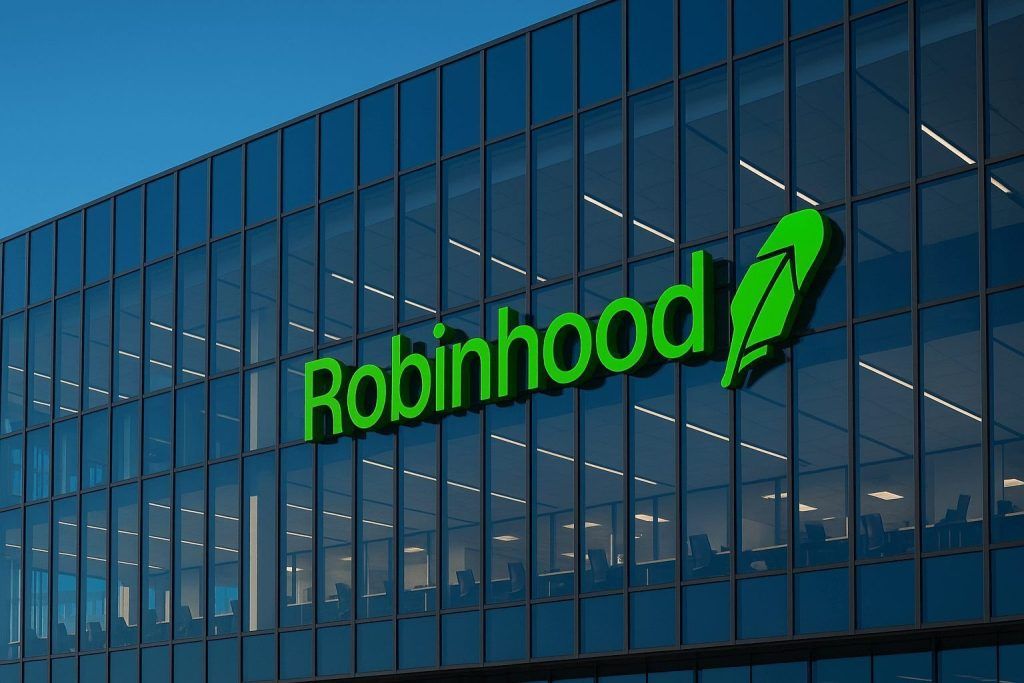Delta Air Lines stock has snapped back after a choppy November, closing Friday notably higher and putting fresh attention on whether DAL is still undervalued heading into the crucial holiday travel season.
All market data in this article refers to the close of U.S. trading on Friday, November 21, 2025, unless otherwise stated. Prices may have moved since.
Delta Air Lines stock price today: key numbers
Delta Air Lines, Inc. (NYSE: DAL) finished Friday at $58.57, up 4.65% on the day, after opening at $56.86 and trading between $56.60 and $59.51. Trading volume was just under 9.6 million shares, above typical recent levels, suggesting strong interest around the move. [1]
Over the past 10 trading sessions, DAL is still fractionally lower (about –0.5%) and has fallen in seven of those ten days, underscoring how volatile airline shares remain in late 2025. [2]
On a longer view, Delta now trades around 16% below its 52‑week high of $69.98, set in January, and well above its 12‑month low near $34.74. [3]
Key snapshot as of November 21, 2025:
- Last close: $58.57
- Day change: +4.65%
- 10‑day performance: roughly –0.5% overall, with mostly down days
- 52‑week range: $34.74 – $69.98
- Market behavior: High beta around 1.4, meaning DAL tends to move more than the broader market in both directions. [4]
A volatile week for DAL shares
This week highlighted just how quickly sentiment can swing in the airline sector:
- On Monday, November 17, Delta dropped 4.5% to $55.76, marking its third straight daily loss and leaving shares more than 20% below their 52‑week high at that point. [5]
- Since then, the stock has clawed back part of those losses, helped by broader market stabilization and a rebound across travel names.
Despite Friday’s bounce, airline stocks overall have lagged the S&P 500 this month as investors worry about softer consumer confidence, higher unemployment risks and still‑elevated interest rates. DAL’s higher beta means it tends to exaggerate both rallies and sell‑offs compared with the index. [6]
2025 earnings snapshot: record profits, but not without turbulence
Delta’s share price action in 2025 reflects a tug‑of‑war between strong operational results and macro and regulatory uncertainty.
Early 2025 wobble
Back in the first quarter, Delta cut its Q1 guidance, citing weaker consumer and corporate confidence. The airline trimmed expected revenue growth to 3–4%, down from 7–9%, and lowered adjusted EPS guidance to $0.30–$0.50, roughly half the earlier forecast. The warning triggered a double‑digit drop in the stock in March. [7]
When Delta reported actual first‑quarter results in April, it delivered:
- Operating revenue: $13.0 billion, up about 3.3% year over year
- Diluted EPS:$0.46, slightly ahead of the prior year’s $0.45
- Fuel costs fell versus 2024, but non‑fuel unit costs rose modestly, squeezing margins. [8]
It wasn’t a bad quarter operationally—but it underlined how sensitive the stock is to even small changes in demand expectations.
Q2 2025: strong beat and reinstated outlook
The tone improved in Q2 2025. Delta reported:
- Adjusted EPS:$2.10, ahead of consensus around $2.08
- Revenue: roughly $16.65 billion, essentially flat year over year and slightly above expectations. [9]
More importantly for the stock, management reinstated full‑year guidance, projecting adjusted EPS of $5.25–$6.25, with a midpoint above Wall Street’s then‑consensus. [10]
A Reuters report highlighted that bookings had stabilized—though they remained below Delta’s early‑year ambitions—with pricing pressure particularly in U.S. domestic markets. Even so, DAL shares jumped around 10–13% on the day as investors welcomed the more confident tone on profits and cost control. [11]
Q3 2025: record September quarter and upgraded full‑year view
Delta followed up with a record September quarter:
- GAAP operating revenue: about $16.7 billion, up 6% year over year
- GAAP diluted EPS:$2.17, versus $1.97 a year ago
- Net income: $1.42 billion, up 11% year over year. [12]
On an adjusted basis, MarketBeat data shows Q3 EPS near $1.71, beating analyst expectations around $1.52, with revenue of roughly $15.2 billion. [13]
Crucially, management raised confidence around the full year:
- Targeting December‑quarter operating margin of 10.5–12%
- Forecasting Q4 adjusted EPS of $1.60–$1.90
- Expecting full‑year adjusted EPS of about $6 and free cash flow of $3.5–$4 billion. [14]
That guidance sits slightly above the latest consensus for 2025 EPS of roughly $6.02, according to Nasdaq data. [15]
Taken together, 2025 is shaping up as one of the most profitable years in Delta’s history, even after a shaky first quarter.
Valuation check: DAL trades like a cyclical, not a high‑growth stock
Despite strong earnings, DAL still trades on a single‑digit earnings multiple:
- Trailing twelve‑month EPS is estimated around $7.14
- At Friday’s close, that implies a P/E ratio of roughly 8.2x. [16]
For context, estimates put the S&P 500’s trailing P/E in the high‑20s and forward P/E around the low‑20s, meaning Delta trades at a steep discount to the broader market, in line with its cyclical, capital‑intensive profile. [17]
On income, Delta is slowly rebuilding its dividend:
- The board declared a quarterly dividend of $0.1875 per share in June and again in September, a 25% increase versus early‑2025 levels. [18]
- At the current share price, that equates to an annualized payout of about $0.75 per share and a forward dividend yield near 1.3%. [19]
That yield won’t attract pure income investors, but the rising dividend signals management’s confidence in cash generation and the balance sheet recovery after the pandemic shock.
What Wall Street is saying about Delta stock right now
Analyst sentiment on Delta is decidedly positive:
- MarketBeat data shows 21 Wall Street analysts covering DAL with an overall Buy” consensus, including one Strong Buy” and no Sell” ratings. [20]
- The average 12‑month price target sits around $71.68, implying roughly 22–23% upside from the current price in the high‑$50s. [21]
Individual firms are similarly upbeat:
- Bank of America recently set a price target of $74
- UBS lifted its target to $75 and reiterated a Buy”
- Wolfe Research trimmed its target slightly from $72 to $70, but kept an Outperform” rating. [22]
TipRanks and other aggregators put the average target in the low‑to‑mid $70s, with high estimates up to $90, again suggesting analysts see material upside if Delta hits its earnings and free‑cash‑flow goals. [23]
On the ownership side, recent filings show a mix of institutional buyers and sellers:
- Brandywine Global Investment Management modestly increased its holdings by about 3.1% in Q2. [24]
- AGP Franklin LLC disclosed a new stake in Delta. [25]
- Meanwhile, Empirical Finance LLC cut its position by roughly a third. [26]
Overall, institutional participation remains deep, with short interest around 3% of float, a fairly moderate level for a cyclical stock. [27]
The big stories behind the stock
1. Holiday reliability and brand perception
With the holiday travel season a key earnings driver, Delta has been making a very public push on reliability and safety.
Simply Wall St notes that the airline has reassured customers that its operations remain stable following disruptions tied to a U.S. government shutdown, with the FAA pausing planned capacity cuts as air‑traffic‑controller staffing improves. Management has emphasized its readiness to handle peak travel demand—a critical narrative after several years of industry‑wide operational hiccups. [28]
From an investment angle, consistent on‑time performance and fewer cancellations help protect Delta’s premium brand, support its loyalty program economics, and reduce compensation costs when things go wrong.
2. AI‑driven pricing under Washington’s microscope
On November 5, U.S. House lawmakers sent Delta’s CEO a letter questioning how the airline plans to use generative AI in ticket pricing, amid broader fears about surveillance‑based price discrimination.” [29]
Lawmakers want clarity on whether AI tools could be used to tailor fares using sensitive personal data or browsing behavior. Delta has strongly denied any such practices, saying it does not target individual customers based on personal information and that its dynamic pricing is based on broad factors like demand, fuel costs and competition. [30]
The airline has previously said it aims to deploy AI‑based revenue‑management technology, via partner Fetcherr, across about 20% of its domestic network by the end of 2025, which could sharpen its pricing and load‑factor optimization over time—but now comes with reputational and regulatory scrutiny attached. [31]
3. Mexico joint venture unwind
Another overhang is Delta’s cross‑border strategy. In September, the U.S. Transportation Department ordered Delta and Aeromexico to unwind their nearly nine‑year joint venture by January 1, 2026, citing anticompetitive effects in U.S.–Mexico City markets. [32]
The JV had allowed the carriers to coordinate schedules, capacity and pricing on many U.S.–Mexico routes and accounted for roughly 60% of Mexico City–U.S. flights. While codeshares and frequent‑flyer reciprocity can continue, Delta loses a powerful tool for optimizing its Mexico network. [33]
Delta called the decision disappointing” and warned that it could hurt U.S. jobs and reduce consumer benefits, but regulators argue it will improve competition and lower fares over time. The financial impact is still uncertain, but investors will watch closely how Delta adjusts capacity and partnerships in Latin America.
Bull vs. bear case: what investors are weighing
The bullish narrative
Investors who are constructive on DAL typically point to:
- Strong earnings power and improving margins
- Record Q3 results, double‑digit net income growth, and management guiding to around $6 in adjusted EPS and billions in free cash flow for 2025. [34]
- Discounted valuation
- A P/E near 8x versus high‑20s for the S&P 500 leaves room for multiple expansion if travel demand and margins prove resilient. [35]
- Premium and loyalty strategy
- A growing share of revenue comes from premium cabins and loyalty partnerships, segments that held up better even when main‑cabin demand softened earlier this year. [36]
- Balance‑sheet repair and rising shareholder returns
- Debt levels have been trending lower, and the dividend—while modest—is increasing again, signaling confidence in long‑term cash flows. [37]
- Supportive Street view
- A broad analyst Buy” consensus and price targets in the low‑to‑mid $70s provide some external validation of the bullish case. [38]
The bearish narrative
More cautious investors focus on:
- Macro and demand risk
- Earlier in 2025, Delta’s guidance cut showed how quickly demand can cool when consumer confidence dips, sending the stock down more than 10% in a day. [39]
- High operating and capital intensity
- Airlines face structurally high fixed costs and ongoing capex for fleets and technology, which makes earnings vulnerable in downturns.
- Regulatory and reputational risk
- The Aeromexico JV unwind and AI pricing scrutiny demonstrate how policy decisions can directly affect routes, pricing strategies and brand perception. [40]
- Volatility and competition
- With a beta above 1.4 and intense competition from U.S. and international carriers, DAL can move sharply on headlines, fuel spikes, or new capacity announcements. [41]
Outlook for Delta Air Lines stock heading into 2026
Looking ahead, the holiday travel period and early‑2026 commentary will likely be the next big catalysts for DAL:
- If Delta delivers on its reliability promises and maintains strong load factors at healthy fares, that would support the case for sustained earnings strength and could justify analyst price targets in the $70s. [42]
- Any renewed demand softness, operational stumbles, or negative developments around AI pricing rules or international alliances could quickly pressure both estimates and the share price.
At around 8x trailing earnings and roughly 1.3% dividend yield, DAL is being priced more like a cyclical value play than a high‑growth story, even as management guides toward record profits and continued cost discipline. [43]
Whether that discount represents an opportunity or a warning sign depends on your view of:
- The durability of post‑pandemic travel demand
- How well airlines can manage costs and capacity in a slower economy
- Your comfort level with regulatory and reputational risks around pricing and international partnerships
Final note
This article is for information and news purposes only and does not constitute financial advice, investment recommendation, or a solicitation to buy or sell any security. Before making any investment decision regarding Delta Air Lines stock (or any other asset), consider your own financial situation, risk tolerance, time horizon and, if needed, consult a qualified financial adviser.
References
1. www.investing.com, 2. intellectia.ai, 3. www.morningstar.com, 4. marketchameleon.com, 5. www.marketwatch.com, 6. worldperatio.com, 7. www.barrons.com, 8. www.prnewswire.com, 9. www.investopedia.com, 10. www.investopedia.com, 11. www.reuters.com, 12. ir.delta.com, 13. www.marketbeat.com, 14. ir.delta.com, 15. www.nasdaq.com, 16. fullratio.com, 17. www.multpl.com, 18. news.delta.com, 19. www.dividend.com, 20. www.marketbeat.com, 21. www.marketbeat.com, 22. www.benzinga.com, 23. www.zacks.com, 24. www.marketbeat.com, 25. www.marketbeat.com, 26. www.marketbeat.com, 27. finance.yahoo.com, 28. simplywall.st, 29. www.reuters.com, 30. www.reuters.com, 31. www.reuters.com, 32. www.reuters.com, 33. www.reuters.com, 34. ir.delta.com, 35. fullratio.com, 36. www.ft.com, 37. ir.delta.com, 38. www.marketbeat.com, 39. www.barrons.com, 40. www.reuters.com, 41. marketchameleon.com, 42. simplywall.st, 43. fullratio.com








